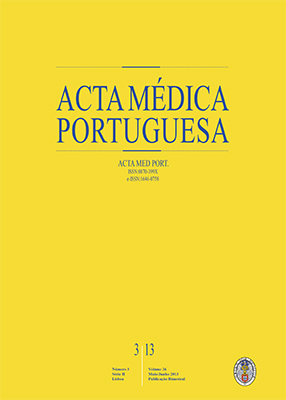Osteotomy at Low-Speed Drilling without Irrigation Versus High-Speed Drilling with Irrigation: an Experimental Study
DOI:
https://doi.org/10.20344/amp.4250Abstract
Introduction: Excessively traumatic surgery can adversely affect the maturation of bone tissue and consequently diminish the predictability of osseointegration so the mechanical and thermal damage should be minimized during surgical procedure. The purpose of this study is to evaluate immediate histological alterations in rabbit tibias, produced by low speed drilling (50 rpm) without irrigation and conventional drilling (800 rpm) under profuse irrigation.Material and Methods: Thirty-six implant osteotomies were created in the tibias of 6 White female rabbits. Drilling began with a 1.5 mm round bur, followed by 2.0 mm, 2.5 mm and 3.5 mm helical drills. The posterior tibial cortex was evaluated as the positive control, and it was preserved during the surgical procedure. The receptor beds were collected for histological analysis.
Results: All defects showed regular edges. Hematoxylin eosin (HE) sections showed that both techniques preserved the bone structure and the presence of living cells. No histological differences between the two surgical drilling techniques were found.
Conclusions: Based on our results, we can conclude that the effects of implant site preparation on bone by low speed drilling (50 rpm) without irrigation and conventional drilling (800 rpm) under abundant irrigation are similar. Both surgical drilling techniques preserve bone-cell viability and the clinician can decide which drilling technique to use, based on other criteria.
Downloads
Downloads
Published
How to Cite
Issue
Section
License
All the articles published in the AMP are open access and comply with the requirements of funding agencies or academic institutions. The AMP is governed by the terms of the Creative Commons ‘Attribution – Non-Commercial Use - (CC-BY-NC)’ license, regarding the use by third parties.
It is the author’s responsibility to obtain approval for the reproduction of figures, tables, etc. from other publications.
Upon acceptance of an article for publication, the authors will be asked to complete the ICMJE “Copyright Liability and Copyright Sharing Statement “(http://www.actamedicaportuguesa.com/info/AMP-NormasPublicacao.pdf) and the “Declaration of Potential Conflicts of Interest” (http:// www.icmje.org/conflicts-of-interest). An e-mail will be sent to the corresponding author to acknowledge receipt of the manuscript.
After publication, the authors are authorised to make their articles available in repositories of their institutions of origin, as long as they always mention where they were published and according to the Creative Commons license.









